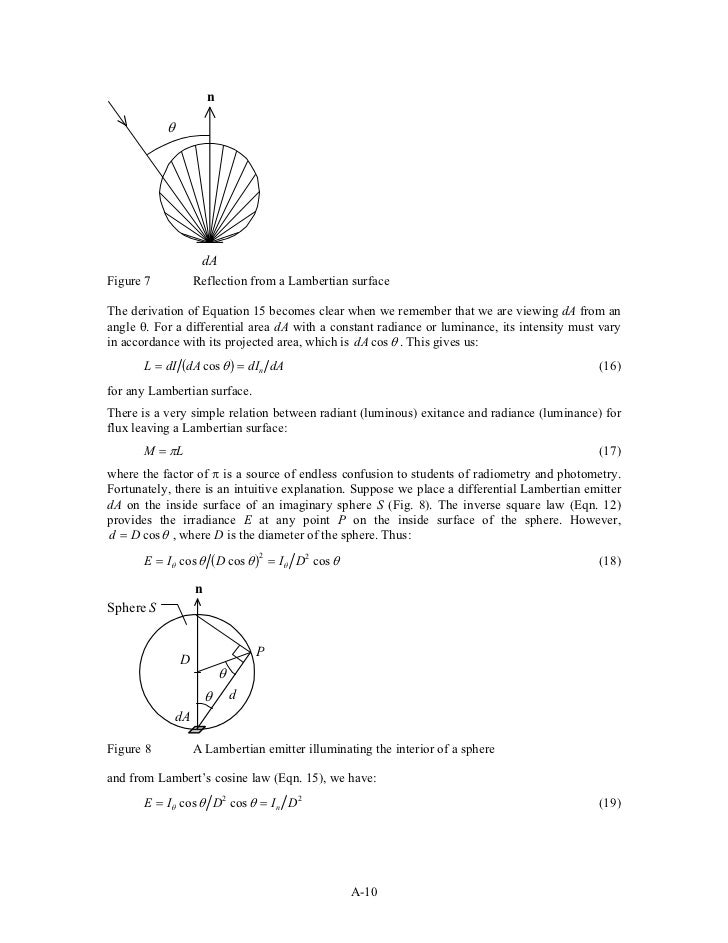Radiometry And The Detection Of Optical Radiation Pdf Converter


Boyd was born in Buffalo, NY. He received the B.S. Degree in physics from the Massachusetts Institute of Technology and the Ph.D. Degree in physics in 1977 from the University of California at Berkeley. Thesis was supervised by Professor Charles H.
Townes and involves the use of nonlinear optical techniques in infrared detection for astronomy. Professor Boyd joined the faculty of the Institute of Optics of the University of Rochester in 1977 and since 1987 has held the position of Professor of Optics. Since July 2001 he has also held the position of the M.
Parker Givens Professor of Optics, and since July 2002 has also held the position of Professor of Physics. His research interests include studies of 'slow' and 'fast' light propagation, quantum imaging techniques, nonlinear optical interactions, studies of the nonlinear optical properties of materials, the development of photonic devices including photonic biosensors, and studies of the quantum statistical properties of nonlinear optical interactions. Professor Boyd has written two books, including widely used text 'Nonlinear optics,' co-edited two anthologies, published over 230 research papers, and been awarded five patents. He is a fellow of the American Physical Society and the Optical Society of America and is a past chair of the Division of Laser Science of the American Physical Society.Svetlana G. Lukishova was born in Moscow, Russia.
She received her M.S. Degree in Physics (with high honors) and Ph.D. Degree (1977) from the Moscow Institute of Physics and Technology (FizTech).
Research was performed at the P.N. Lebedev Physical Institute of theUSSR Academy of Sciences.
Thesis was supervised by P.P. Pashinin and Nobel Prize winner A.M. Prokhorov and involved spatial beam-profile and temporal pulse-shape control in laser-fusion systems. After holding research positions at the I.V. Kurchatov Nuclear Power Institute, Troitsk branch TRINITI (Moscow Region), the Institute of Radioengineering and Electronics of the Russian Academy of Sciences (Moscow), and the Liquid Crystal Institute (Kent, Ohio), she joined the Institute of Optics, University of Rochester in 1999 where she holds the position of Senior Scientist.
She has received a Long-Term Grant from the International Science (G. Soros) Foundation and Grants from the Russian Government and the Russian Foundation for Basic Research for her work on nonlinear optics. Lukishovaa (TM)s research interests include both optical material and optical radiation properties. She has more than 30 years experience with the development of high-power laser systems and the interaction of laser radiation with matter. Currently her main research areas are nonlinear optics and photonic quantum information systems.
She has published more than 80 research papers and a book contribution, and has 3 USSR Inventor Certificates.Yuen-Ron ShenY. Ron Shen received his BS degree from the National Taiwan University in 1956 and his Ph.D. From Harvard University in 1963 under the supervision of Nicolaas Bloembergen. After a year of postdoctoral work at Harvard, he was appointed to the Physics faculty of the University of California at Berkeley where he has been ever since. He has also been associated with the Lawrence Berkeley National Laboratory since 1966.Shena (TM)s research interestis in the broad area of interaction of light with matter. He was involved in the early development of nonlinear optics, searching for basic understanding of various nonlinear optical phenomena. He is the author of the widely used text 'The Principles of Nonlinear Optics.'
Nonlinear Optics

He contributed to the early accurate determination of band structures of semiconductors by developing a high-resolution wavelength-modulation spectroscopic technique. He initiated the field of nonlinear optics in liquid crystals and applications of nonlinear optics to characterization of liquid crystals. He pioneered the development of optical second harmonic generation and sum-frequency generation as powerful spectroscopic tools for surface and interface studies and their applications to many neglected, but important, areas of surface science. More recently, he has devoted himself to the development of sum-frequency generation as a novel sensitive probe for molecular chirality.Shen has received numerous prestigious awards including the 1986 Charles H.
Townes Award of the OSA, the 1992 Arthur L. Schawlow Prize and the 1998 Frank Isakson Prize of the APS, and the 1996 Max-Planck Research Award. He is a member of the American Academy of Arts and Sciences, the National Academy of Sciences, and the Academia Sinica.
He is also a foreign member of the Chinese Academy of Sciences.
Radiometry is the measurement of optical radiation. In planetary science the term most often refers to the measurement and characterization of radiation emitted by planetary, satellite and asteroid surfaces in the infrared portion of the electromagnetic spectrum.
A closely related (and nearly synonymous) term is spectroscopy, in which the intensity of the incident radiation from some source is described as a function of wavelength, permitting the construction of a spectrum. Many articles in this volume describe spectroscopic investigations of solar system bodies (see;; ).The quantitative characterization of radiation requires a measuring apparatus or instrument. Radiation typically passes from a source, through an aperture, to detectors.
Optical filters and other devices may operate in the path of the radiation, and electronic circuitry is required to accept the detector output and convert this.
